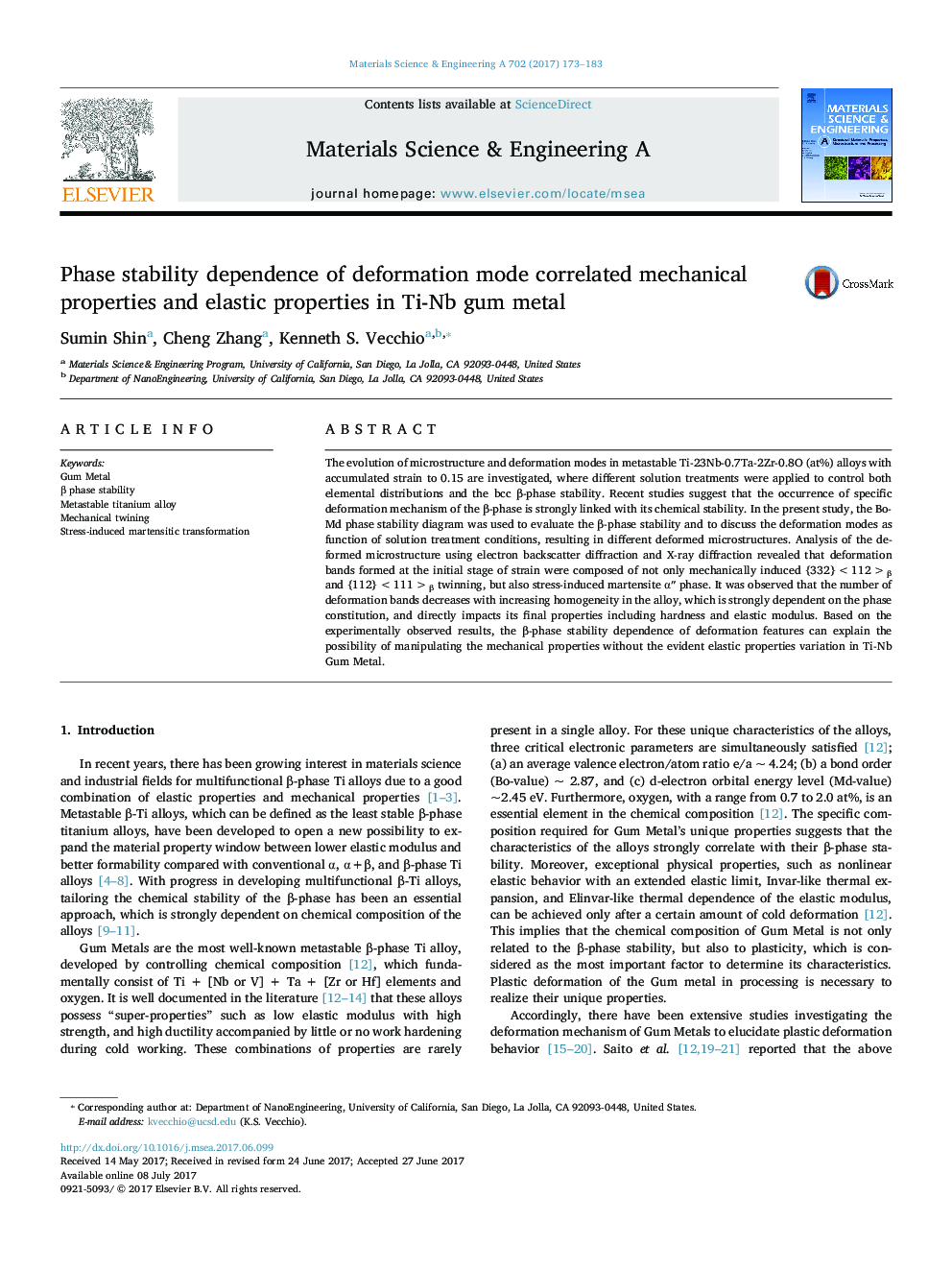| Article ID | Journal | Published Year | Pages | File Type |
|---|---|---|---|---|
| 5455829 | Materials Science and Engineering: A | 2017 | 11 Pages |
Abstract
The evolution of microstructure and deformation modes in metastable Ti-23Nb-0.7Ta-2Zr-0.8O (at%) alloys with accumulated strain to 0.15 are investigated, where different solution treatments were applied to control both elemental distributions and the bcc β-phase stability. Recent studies suggest that the occurrence of specific deformation mechanism of the β-phase is strongly linked with its chemical stability. In the present study, the Bo-Md phase stability diagram was used to evaluate the β-phase stability and to discuss the deformation modes as function of solution treatment conditions, resulting in different deformed microstructures. Analysis of the deformed microstructure using electron backscatter diffraction and X-ray diffraction revealed that deformation bands formed at the initial stage of strain were composed of not only mechanically induced {332}<112>β and {112}<111>β twinning, but also stress-induced martensite âº×´ phase. It was observed that the number of deformation bands decreases with increasing homogeneity in the alloy, which is strongly dependent on the phase constitution, and directly impacts its final properties including hardness and elastic modulus. Based on the experimentally observed results, the β-phase stability dependence of deformation features can explain the possibility of manipulating the mechanical properties without the evident elastic properties variation in Ti-Nb Gum Metal.
Related Topics
Physical Sciences and Engineering
Materials Science
Materials Science (General)
Authors
Sumin Shin, Cheng Zhang, Kenneth S. Vecchio,
